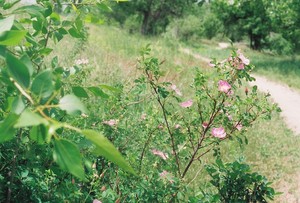19 Jun Sun 2011
Heavy or light hay?
A small bale of hay is 50 gallons of material, and sometimes, due to moisture content, density or other quality factors, the weight of the bale may differ.Like a bushel, a small bale is a volumetric assessment.Thus, it is often better to get “heavy” bales than “light” ones, because you are getting more hay for your money.
However, heavy bales are typically sold for more than light bales and the farmer who is buying hay must often do a per-pound analysis instead of a volumetric analysis.If a heavy bale weighing 75 pounds is sold for $10 and a light bale weighing 25 lbs is sold for $10, the buyer of the light bale is paying an additional $1.75 per pound for hay.
Green hay is rarely sold: hay is typically dried.However, a premium on fresh hay ought to be paid because it provides better nutrition to your animals and you do not require as much green hay as you do dried hay.Paying twice as much for green would usually not be unreasonable.If you buy green hay, however, make sure that it is very fresh, and buy frequently.Old green hay that is not stored properly will quickly mold or ferment, which is not healthy for your animals.

